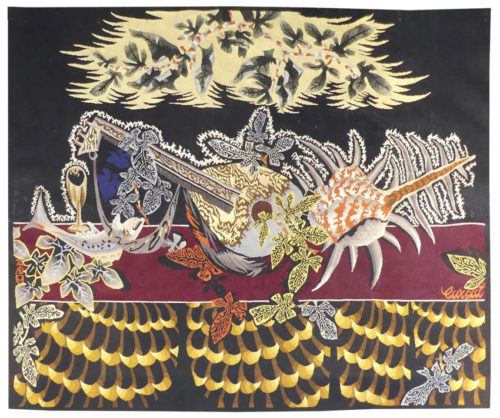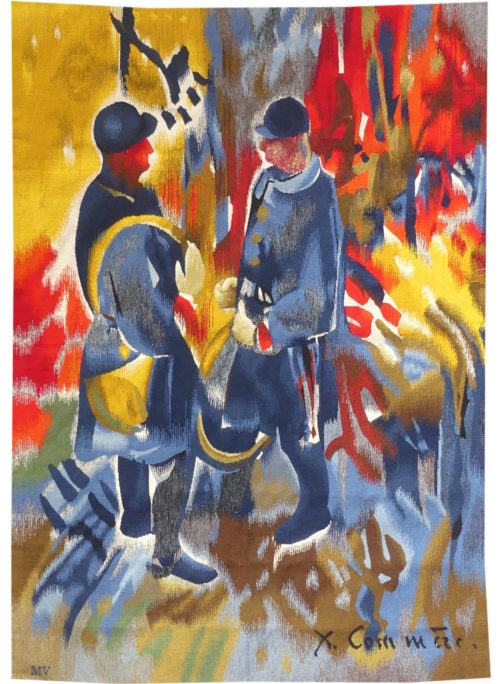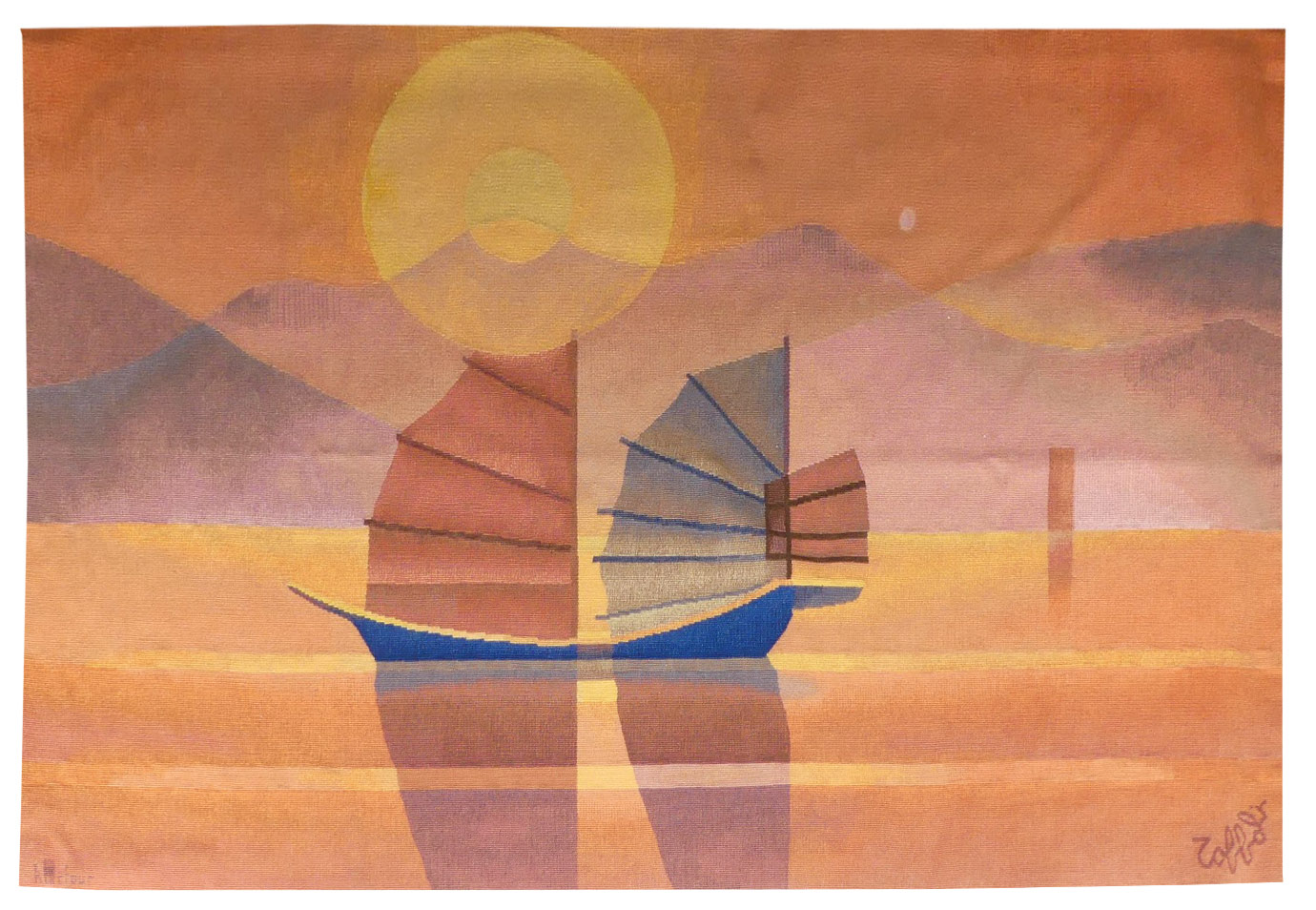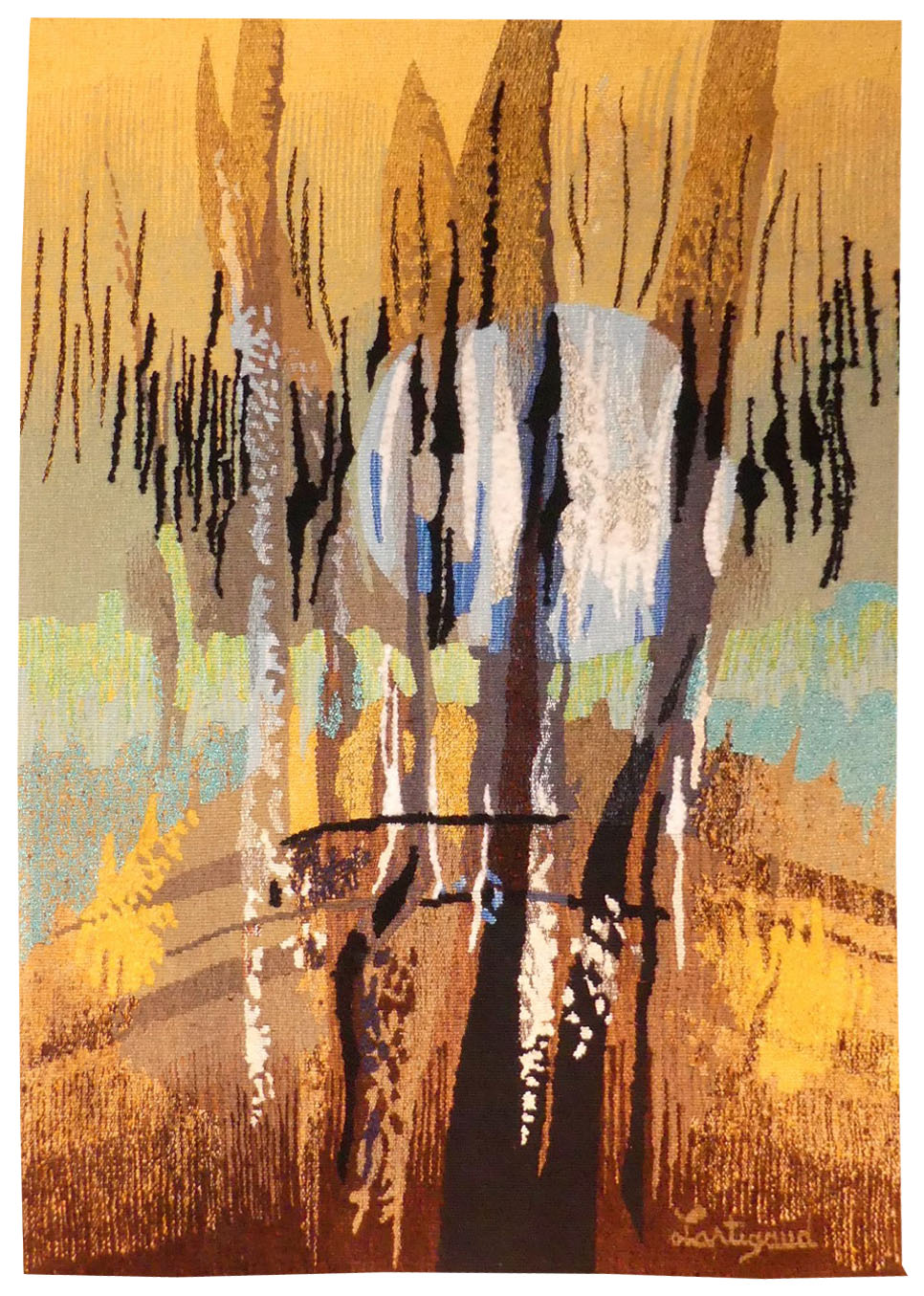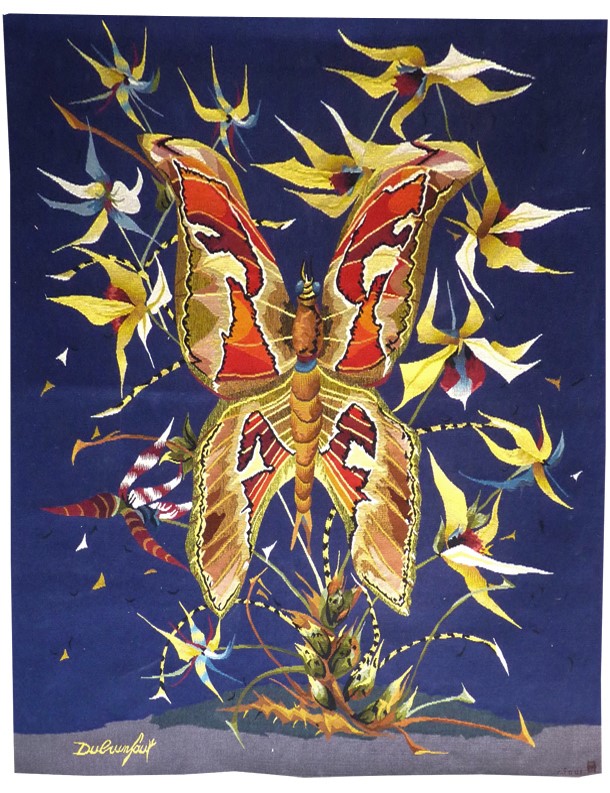Aubusson tapestry woven by the Four workshop.
N°3/6.
Circa 1970.
Edmond Dubrunfaut can be considered as the great 20th century renovator of the Belgian tapestry tradition. He founded a weavers’ workshop in Tournai as early as 1942, then, in 1947, created the
Centre de Rénovation de la Tapisserie de Tournai. He produced for various Belgian workshops (Chaudoir, de Wit,...) numerous cartoons destined notably to adorn Belgian embassies throughout the world. Moreover, Dubrunfaut was a teacher of monumental art forms at the
Academie des Beaux-Arts de Mons from 1947 to 1978 and then, in 1979, contributed to the creation of the
Fondation de la tapisserie, des arts du tissu et des arts muraux de Tournai, a veritable heritage centre for the art of the tapestry in Wallonie. His style, characterised by figuration, strong colour contrasts, draws direct inspiration from nature and animal life (as with Perrot, for example, this artist has a net predilection for birdlife).
Dubrunfaut, as well as having his works woven in Belgium, gave numerous cartoons to the Four manufacture in Aubusson : birds and butterflies combine with exotic flowers in sharp, bright colours on a midnight blue background.
Bibliography :
Exhibition catalogue Dubrunfaut et la renaissance de la tapisserie, tableaux, dessins, peintures, Musée des Beaux-Arts de Mons, 1982-1983


